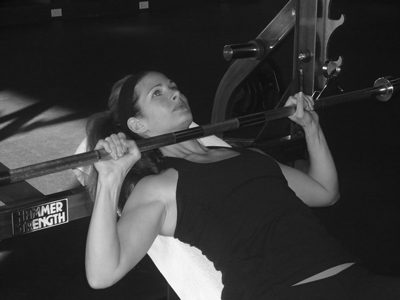Jonathan Ross is a two-time Personal Trainer of the Year award winner (IDEA and Ace). His skill in personal training stems from his ability to put himself in his clients shoes. In Jonathan's own words:
My mother's transformation is my motivation: Before my father died, she was mostly as unmotivated as he had been. After his death, she saw the writing on the wall, but still only committed to changing at her own pace. I couldn't get her very active at the time. I had made a decision to become a trainer at this point, but hadn't yet done so. As a result, my coaching skills were a bit rough.
She was only willing to make nutrition changes at first. In the first few years after my father died, she followed my guidance on making nutrition changes and lost a total of about 90 pounds (at the time of my fathers' death, she was 370 pounds), but hit the inevitable plateau that comes from not doing exercise and nutrition together.
She finally got started with taking water classes and began walking. A while after that, I got her started resistance training with me a couple of days per week (Back when I had that kind of room in my schedule!) and she began taking indoor cycling classes as well. Seven years after my dad died, she had lost 170 pounds. She would have lost it faster if she had made all of the changes necessary more quickly.
But, her story is encouraging to many people since (1) she did it at her own pace - she didn't look for the quick fix, and she didn't go faster than she was comfortable with, and (2) she never went backward during the plateaus. She just hung out there a bit while she got herself ready for taking on the next round of changes and challenges.
So why does this matter?
Again, in Jonathan Ross' words:
The biggest factor is that most trainers (especially those who have spent their lives growing up in a "normal," i.e., non-obese household) have little idea how to develop rapport and connect with this population for no other reason than they come from different worlds and it is hard to know what it is truly like to live that way unless you've had first-hand experience.)
Put Yourself in Their Shoes
I don't care how good of a trainer you are. If you don't have a good relationship with your client they'll leave. 'Nuff said. So the key then becomes developing that relationship early on and maintaining it. Maybe you don't have a story like Jonathan's (I don't) -- so how do you connect? Here are 4 ways:
1. Break the Ice
The first step in breaking the ice is to listen. Take notes as your client speaks, it shows them you care. Paraphrase their answers and don't interrupt.
Often new clients feel anxious or awkward; they're not trying to be rude. As your client gets to know you better, chances are good that he or she will become more open. One useful trick in lightening the mood is to tell a funny story about myself. I make it semi-embarrassing and personal.
My favorite story is my first attempt at curling. I slipped, fell, and bruised my hip. The result? Walking with a limp for two weeks.
I've told this story countless times as it's my go-to when I feel my client is anxious or there is a lull in the conversation. Every time I tell it more passionately than the last and I've added in a good amount of humor. The hidden agenda is to show my client that even trainers struggle with new athletic endeavors and everybody fails. They should embrace failure on their road to success.
We all have funny stories about failed experiences in the gym or sport. Write down 1-2 stories where you struggled attempting a new exercise of sport. Be vivid, be detailed, be emotional. Try to throw the stories in when speaking with friends and families and practice them. Telling the story to your client should be a theatrical performance. Don't skimp on the details or emotion. Here's some motivation:
2. Put yourself on their level - Body Language
Coach Scott Tate wrote a better article on body language than I ever could. Check it out here.
3. Smile
To paraphrase Dale Carnegie from his excellent book "How to Win Friends & Influence People "A smile let's clients know you're happy to see them"
If you aren't smiling, you don't belong in the personal training profession.
Isopaxism also works well. The nonverbal and usually subconscious behaviour helps establish rapport and empathy. In short, it means follow your clients lead; if she speaks softly, so do you. If he laughs, you laugh as well.
4. Welcome them
Make your clients part of the gym community. Introduce them to all of the staff and their fellow members; they should be the most popular people in the gym. Often anxious clients are uncomfortable because the gym is outside their regular social circle and therefore beyond their comfort level. The quicker you can make them comfortable, the less chance they'll leave.
It's the Small Things
The best trainers in the World are not the smartest. They're the ones who do all the small things right. The faster and more effectively you can connect with your clients on their level to build great relationships the more successful you'll be. It's all another step to building your client army.










